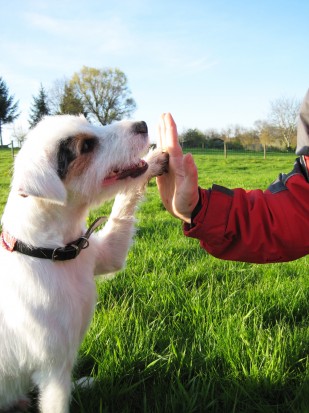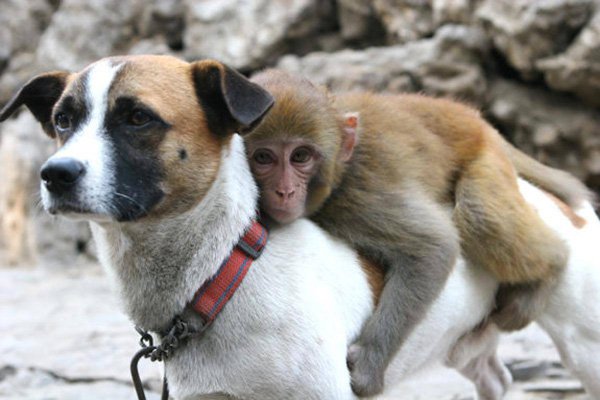
Dog training爄s the process of teaching a燿og to perform behaviors in understands to certain commands. It is a matter of communicating with a dog so that it understands exactly what it should do.?/b>
Dog training爄s the process of teaching a燿og to perform behaviors in understands to certain commands. It is a matter of communicating with a dog so that it understands exactly what it should do. The most common behaviors are "sit", "lie down", and teaching the dog to relieve it outside.
Dog Training Type
There are many type and many objectives of?a href="http://professionaldogtraining.us/dog-training">dog training, from燽asic obedience training to specialized areas including law enforcement, military, search and rescue, hunting, working with livestock, assistance to people with disabilities, entertainment, dog sports, guard dogs and protecting people or property.
Dog Training Benefits
There are many benefits of燿og training, including the safety of you and your dog, reduced stress, an enjoyable pastime and a closer relationship with your dog.
Basic Dog Training
Most dogs live with people who want them to behave in ways that make them pleasant to be around, keep them safe, and provides for the safety of other humans and pets.
Keep in mind, dogs do not dog figure out燽asic obedience on their own. The fundamental rule that must be remembered is that one should never apply human standards of society onto the dog with the assumption that the dog will understand.
Communicating in humane way which dog understands is hardest part of training. However, the underlying principle of all communication is simple: reward desired behavior while ignoring or correcting undesired behavior.
The following six behaviors usually are used in basic?a href="http://professionaldogtraining.us/dog-obedience-courses">dog obedience courses:
Consistency is a key. Give commands with the same actions each and every time. This is the only way that your dog will learn. So, you need to take note of the action that you are making when you are telling it to 'sit', 'roll over', etc.
Corrections are a form of punishment. It can be physical i.e. leash correction or mental i.e. withdrawing a reward. The dog's personality, the behavior and the importance of the correct behavior should all be taken into account in using corrections with your dog.
Keep in mind, training a dog takes time and patience; however, canines seem to understand what the trainer wants fairly quickly.
Please also check out our other guide on?a href="http://professionaldogtraining.us/dog-training-certification-for-professional-dog-trainers">dog training certification爐ips and?a href="http://professionaldogtraining.us/dog-trainer-schools">dog trainer schools爂uide!
 High Fiber Cat Food: Bad Fiber
Fiber is needed in a cat’s diet. Many experts will have
High Fiber Cat Food: Bad Fiber
Fiber is needed in a cat’s diet. Many experts will have
 4 Great Tricks To Teach Your Dog
4 Great Tricks To
4 Great Tricks To Teach Your Dog
4 Great Tricks To
 Horse Maintenance and Care: Top 5 Priorities
Horse Maintenance and Care: Top 5 Priorities
H
Horse Maintenance and Care: Top 5 Priorities
Horse Maintenance and Care: Top 5 Priorities
H
 Can Dogs And Cats Be Vegetarians?
Can Dogs And Cats
Can Dogs And Cats Be Vegetarians?
Can Dogs And Cats
 What Is Canine Flu ?
What Is Canine Fl
What Is Canine Flu ?
What Is Canine Fl
Copyright © 2005-2016 Pet Information All Rights Reserved
Contact us: www162date@outlook.com